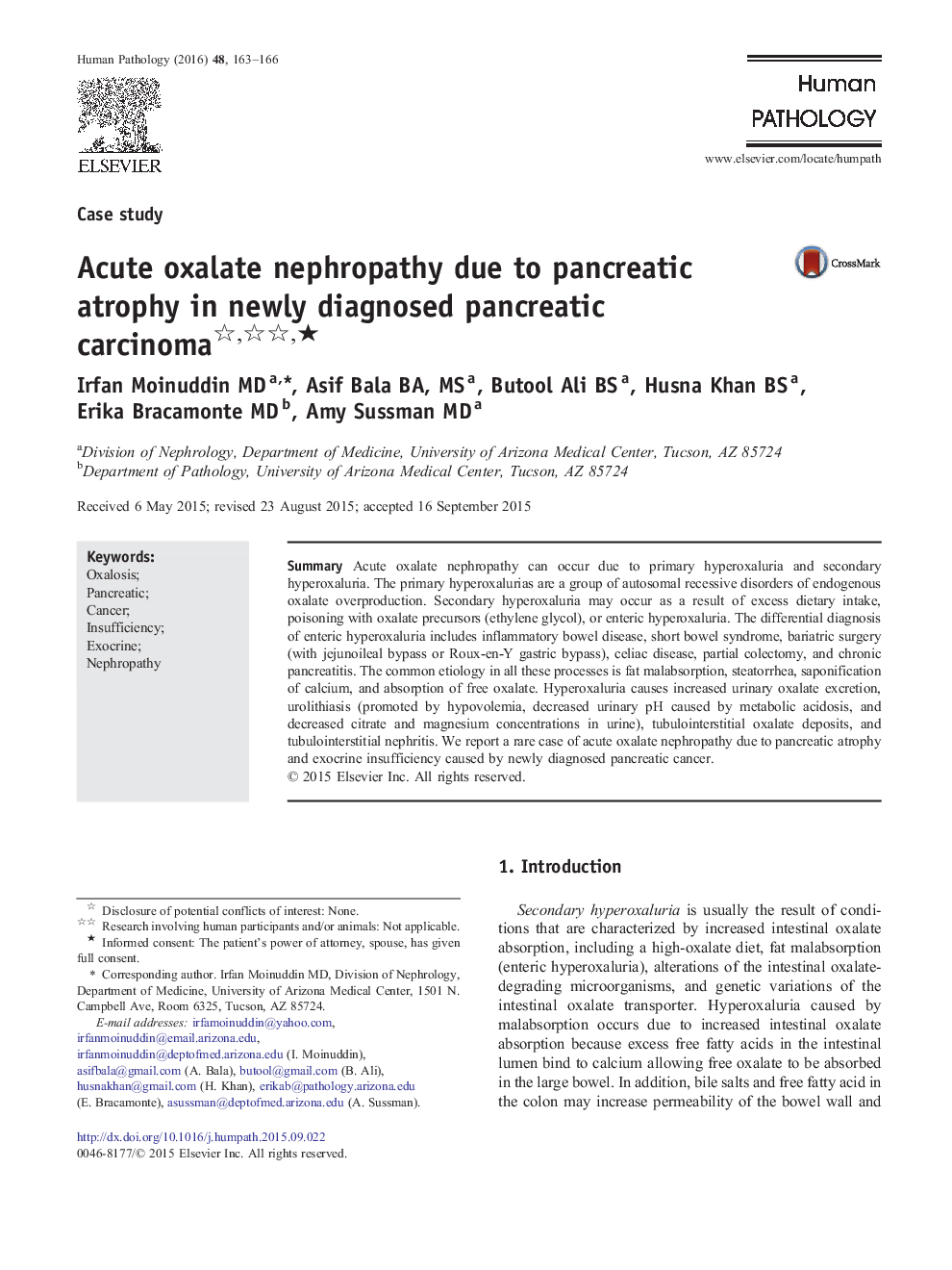| Article ID | Journal | Published Year | Pages | File Type |
|---|---|---|---|---|
| 4132532 | Human Pathology | 2016 | 4 Pages |
SummaryAcute oxalate nephropathy can occur due to primary hyperoxaluria and secondary hyperoxaluria. The primary hyperoxalurias are a group of autosomal recessive disorders of endogenous oxalate overproduction. Secondary hyperoxaluria may occur as a result of excess dietary intake, poisoning with oxalate precursors (ethylene glycol), or enteric hyperoxaluria. The differential diagnosis of enteric hyperoxaluria includes inflammatory bowel disease, short bowel syndrome, bariatric surgery (with jejunoileal bypass or Roux-en-Y gastric bypass), celiac disease, partial colectomy, and chronic pancreatitis. The common etiology in all these processes is fat malabsorption, steatorrhea, saponification of calcium, and absorption of free oxalate. Hyperoxaluria causes increased urinary oxalate excretion, urolithiasis (promoted by hypovolemia, decreased urinary pH caused by metabolic acidosis, and decreased citrate and magnesium concentrations in urine), tubulointerstitial oxalate deposits, and tubulointerstitial nephritis. We report a rare case of acute oxalate nephropathy due to pancreatic atrophy and exocrine insufficiency caused by newly diagnosed pancreatic cancer.
